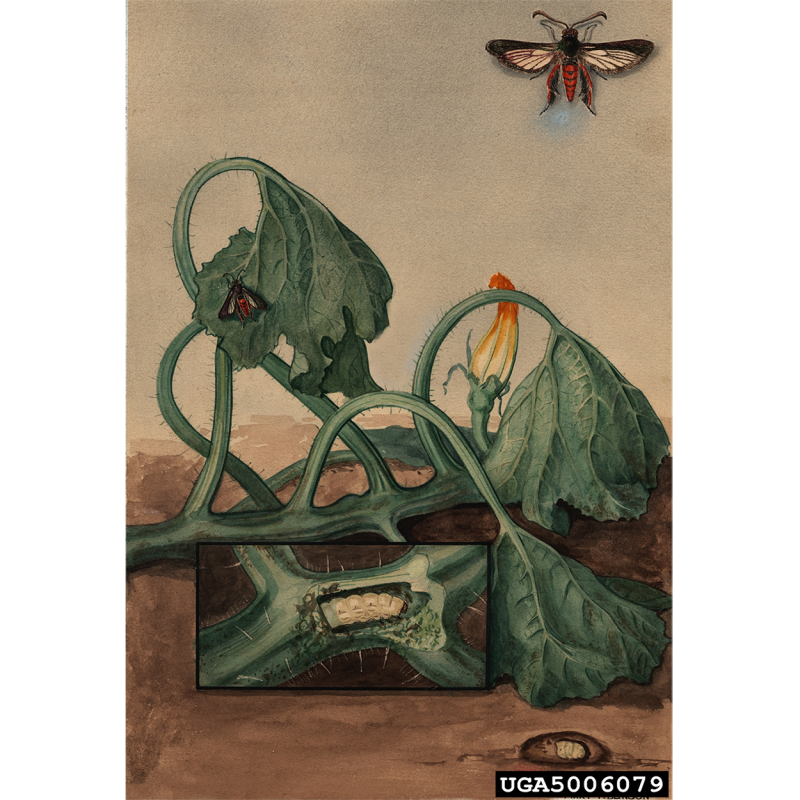
Written with contributions by Shelby Pritchard, former SDSU Extension Pest Management Specialist.
Originally Submitted: September 23, 2022
There are many insect pests that are cause for concern to gardeners across the state of South Dakota. Squash vine borers (Melittia cucurbitae) are clearwing moths that belong to the family Sesiidae within the order Lepidoptera (moths and butterflies).
The larvae are considered serious pests of pumpkins, zucchini, squash, and other winter squashes, and infestations can result in severely reduced productivity and plant health.
This article will highlight the biology of the squash vine borer as well as ways to manage populations.
Squash Vine Borer Biology
Lifecycle
Squash vine borers have one generation per year and undergo complete metamorphosis (i.e. egg, larva, pupa, and adult) (Figure 1).
In South Dakota, squash vine borer adults typically begin to emerge between late June through early July. Emergence of all squash vine borer life stages can be calculated by degree days, which can be found in a previous article listed below (Reference 1).
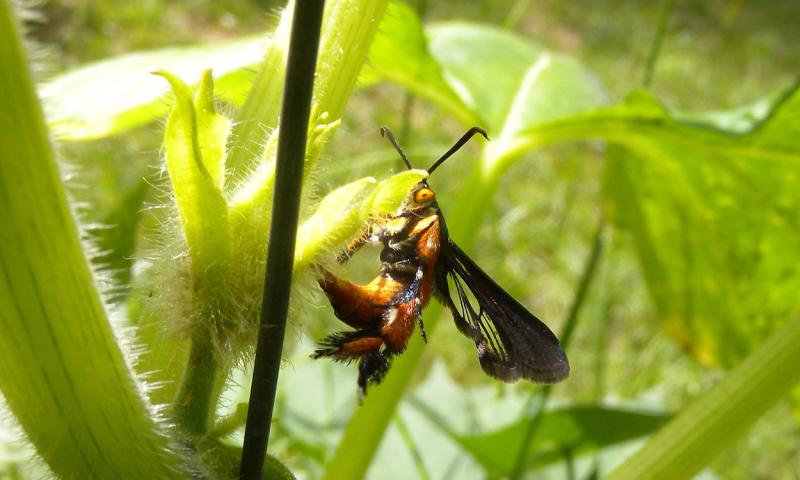
Once mated, adult females search for host plants in order to lay eggs on the stems (Figure 2).
Larvae emerge after approximately 10 days and almost immediately bore into the interior of the plant stem.
Squash vine borer larvae remain in the stem and feed continuously until maturity, which can take around one month.
Mature larvae exit the host plant and drop down into the soil, where they overwinter as pupae.
The pupae remain in the soil until the next summer, when the adults emerge to begin the lifecycle again.
Identification
Adult
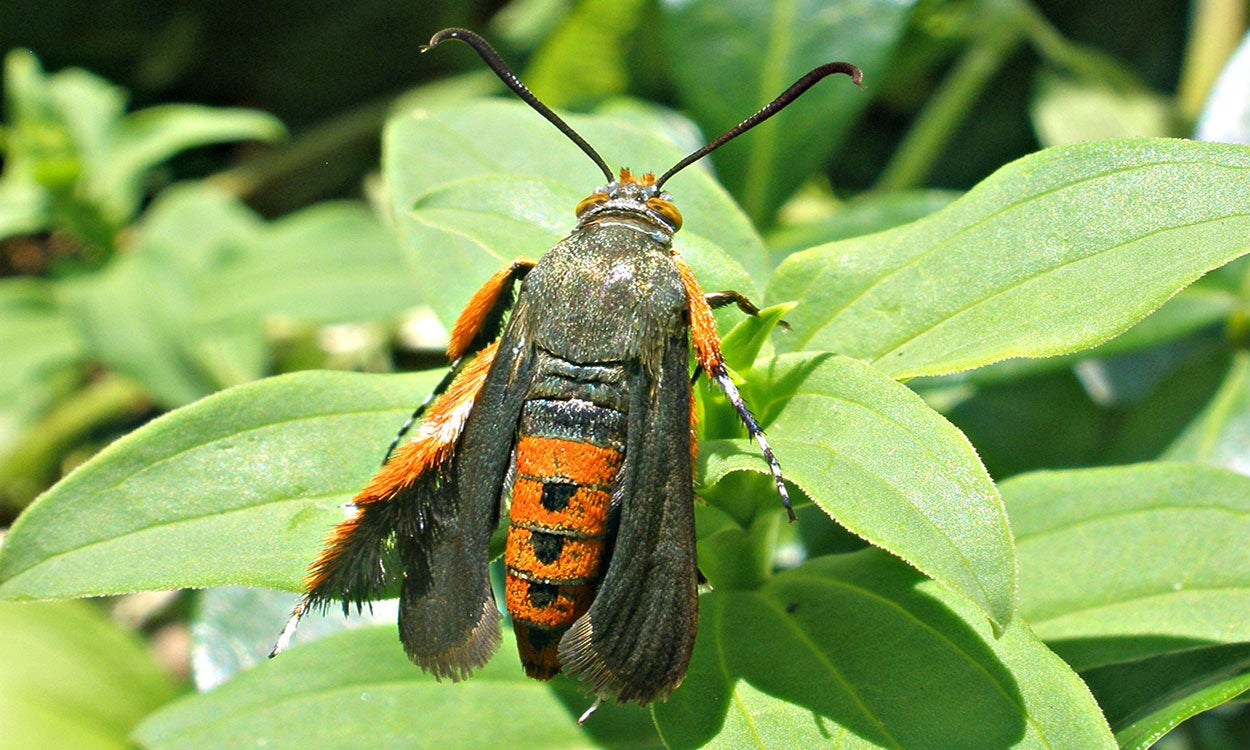
Squash vine borer adults have metallic green front wings and clear hindwings that mimic wasps.
They are approximately ½ inch in length with an orange abdomen and legs. The head, thorax, and antennae are black, with additional black dots on the abdomen (Figure 3).
Egg
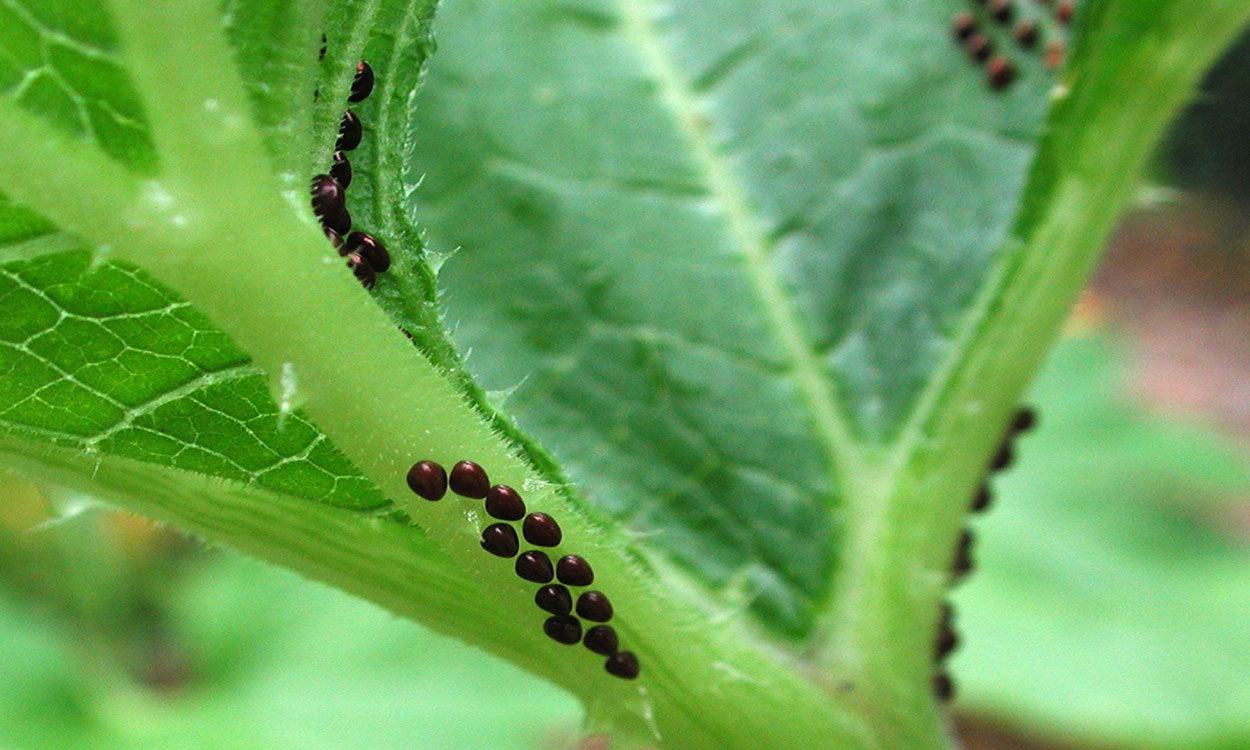
Squash vine borer eggs are round and reddish-brown in color. They are approximately 1 millimeter in length and are laid singularly in loose clusters.
Eggs can be found on the stems of host plants (Figure 4).
Larvae and pupae
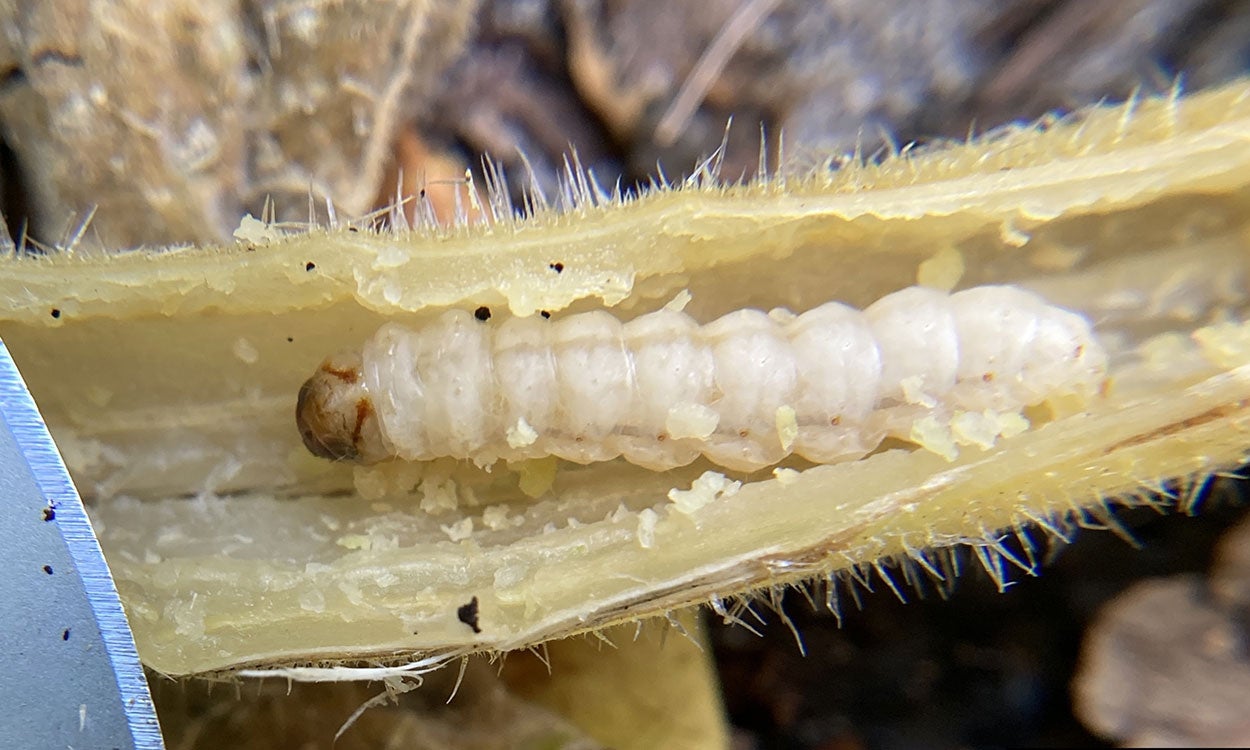
Squash vine borer larvae are wrinkled and creamy-white in color. They have a distinct brown head and can grow up to 1 inch in length when mature (Figure 5).
Squash vine borer pupae aren’t commonly seen, since they remain underground. They are brown in color and are approximately ¾ of an inch in length.
Feeding Behavior and Injury
The squash vine borer larvae are the damaging life stage. The larvae tunnel into the plant stems, where they continuously feed on tissue. This type of feeding cuts off nutrient and water flow from the feeding point onward, which can have serious effects. Some damaging side effects include wilting vines, reduced yield, increased chances of diseases, and even plant death. Signs of squash vine borer infestation include entry holes on the stems with greenish-yellow frass (excrement) around the entry area (Figure 6).
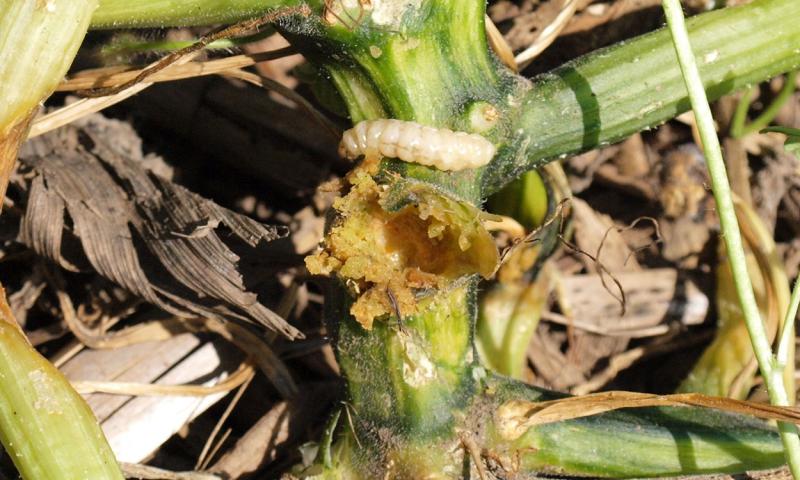
Management
Ways to manage current infestations:
- Remove and destroy plants that have been killed off by squash vine borer. Make sure to discard plants in the trash and away from the garden area.
- Add moist soil around stem joints to promote new root growth. This will increase the plant’s chance of survival in the event the main stem has been infested.
- Scout plants for evidence of larval feeding. If observed, cut a lengthwise slit into the stem, remove, and destroy larva. Place soil over the stem once the larva is terminated.
Ways to prevent infestations:
- Apply a residual insecticide spray labeled for squash vine borers at the base of host plants when moths are emerging (mid to late June). Remember to always read the label and follow instructions on use. Also, follow all label instructions regarding necessary PPE (personal protective equipment).
- If there have been previous infestations, grow host plants in a different area.
- Cover plants with floating row covers. This can help keep newly-emerged squash vine borer adults off plants.
- Plant at a different time or stagger planting dates of common host plants.
- Plant less-susceptible host plant varieties (ex: butternut squash, crookneck squash, cucumbers).
- Remove and/or discard plants at the end of the season to get rid of any remaining larvae.
References
- Varenhorst, A., A. Bachmann, P. Rozeboom, P. Wagner, and S. Pritchard. 2022. Squash vine borer activity estimates: April 29, 2022. South Dakota State University Extension.
- Eric Middleton, Biology and management of squash vine borer (Lepidoptera: Sesiidae), Journal of Integrated Pest Management, Volume 9, Issue 1, 2018, 22.


